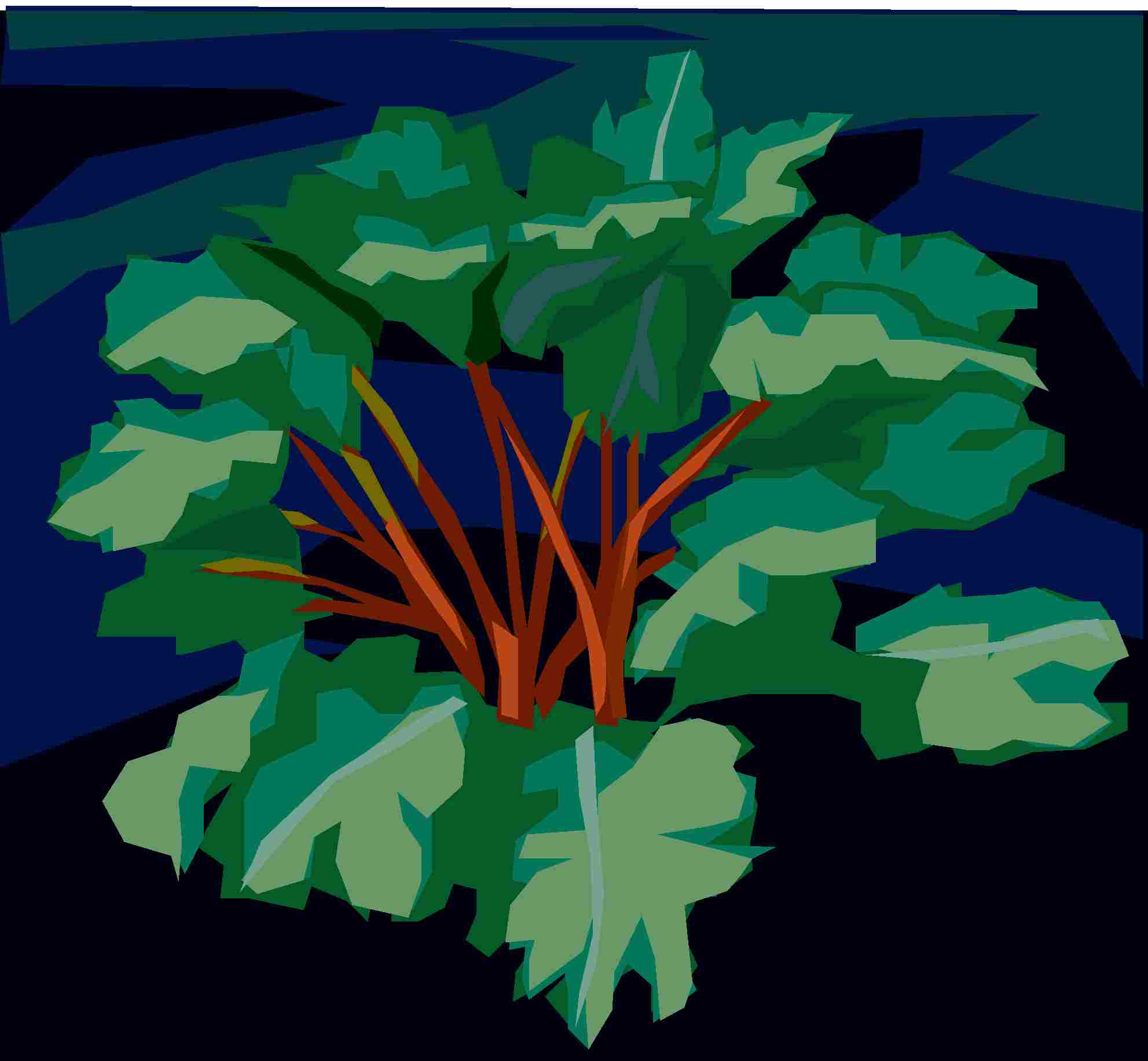Frugal Living
Plant Edible Landscape

If you are gardening on a budget, try planting edible landscape. It maximizes your investment and your harvest. Not only are you growing your own food, but beautifying your property too.
Perennial Edibles will maximize your investment. Not only are they pretty to look at, but they also provide your family with fresh vegetables.
Perennial Edibles tend to be more tolerant of the sun and soil than annual plants. Perennials come back year after year. The bigger your edible landscape gets, the less work it requires and the more fruit it will produce. The only trade off is that they may have little to no fruit for the first couple of years until the plants or trees become well established.
Suggested list of Perennials for Edible Landscape Use:
Rhubarb
First of all rhubarb is a pretty part of your edible landscape. It will look good and taste good. The large leaves create a heavy texture and some varieties have red stems that add additional color. Rhubarb does best in raised beds or well drained areas. They prefer full sun but can take shade. Keep in mind, the more shade you have the fewer pretty leaves you'll get.
Asparagus
Nothing beats fresh asparagus baked in the oven with a little butter. You can also use asparagus as a perennial border in your home vegetable garden. Since it does get quite tall, it may be best to put in the back or middle of your edible landscape garden.
Chives
Yum, a baked potato sprinkled with fresh chives. Chives produce awesome purple globe looking flowers in June that are also edible. If you choose to plant in your home vegetable garden, they also serve as a deer deterrent and will also multiply over the years.
Thyme
Thyme serves as a beautiful ground cover. It prefers full sun. Thyme is called for in almost every recipe in your cookbook and it is much better when fresh. When planting, think about planting by the walkway or front door. Thyme has a minty smell and serves as a natural deodorizer. Thyme comes in all sorts of varieties and flavors: high mounds, yellow, fuzzy and others that hug the ground. The multiple flavors you can choose from are: lemon, orange, lime, mint and coconut. When planting, keep in mind that if you choose the wooly or mother of thyme's variety, the leaves are sort of hairy.
Sweet Wood ruff
Sweet Wood ruff usually grows 6-8 inches tall and might reach 10 inches when it flowers. Generally sweet wood ruff is used as a ground cover as it likes moist areas. There are very few edibles that like the shade but sweet wood ruff does. If it gets too dry, it starts looking brown and ragged looking. It will recover in the fall when the weather cools but who wants a ragged looking plant in the landscape, plant in the shade and it will flourish.
Blueberries
When purchasing your blueberries, make sure you check to see if the variety needs cross pollination. If it does, you need to buy two blueberry bushes. Blueberries like acidic soil that is well drained. If needed, you can always add to the soil to make it more acidic. If you don't want a huge bush, purchase a half high variety and it will only grow to four or five feet. The half high variety can also withstand cold better than the taller bush. The drawback to blueberries is that birds love them too. You may want to buy some bird netting for your blueberry bushes.
Fruit Trees
There are various types of fruit trees you can plant as part of your edible landscaping. Some of the types are: American persimmon, pawpaw, quince, peach or sour cherry. Of course, don't forget the apple tree. If you live in garden zone 5 or above, planting peaches will be a waste of your money as they won't survive the climate.
Grapes
Check to see what type of grape thrives in your garden zone before deciding what type to plant. If you want an old world charm look, trellis the grapes. It looks great in your yard and produces delicious fruit. The drawbacks to planting grapes are that they are a favorite meal to the local racoons and Japanese beetles.
May God Bless all your Gardening Endeavors










